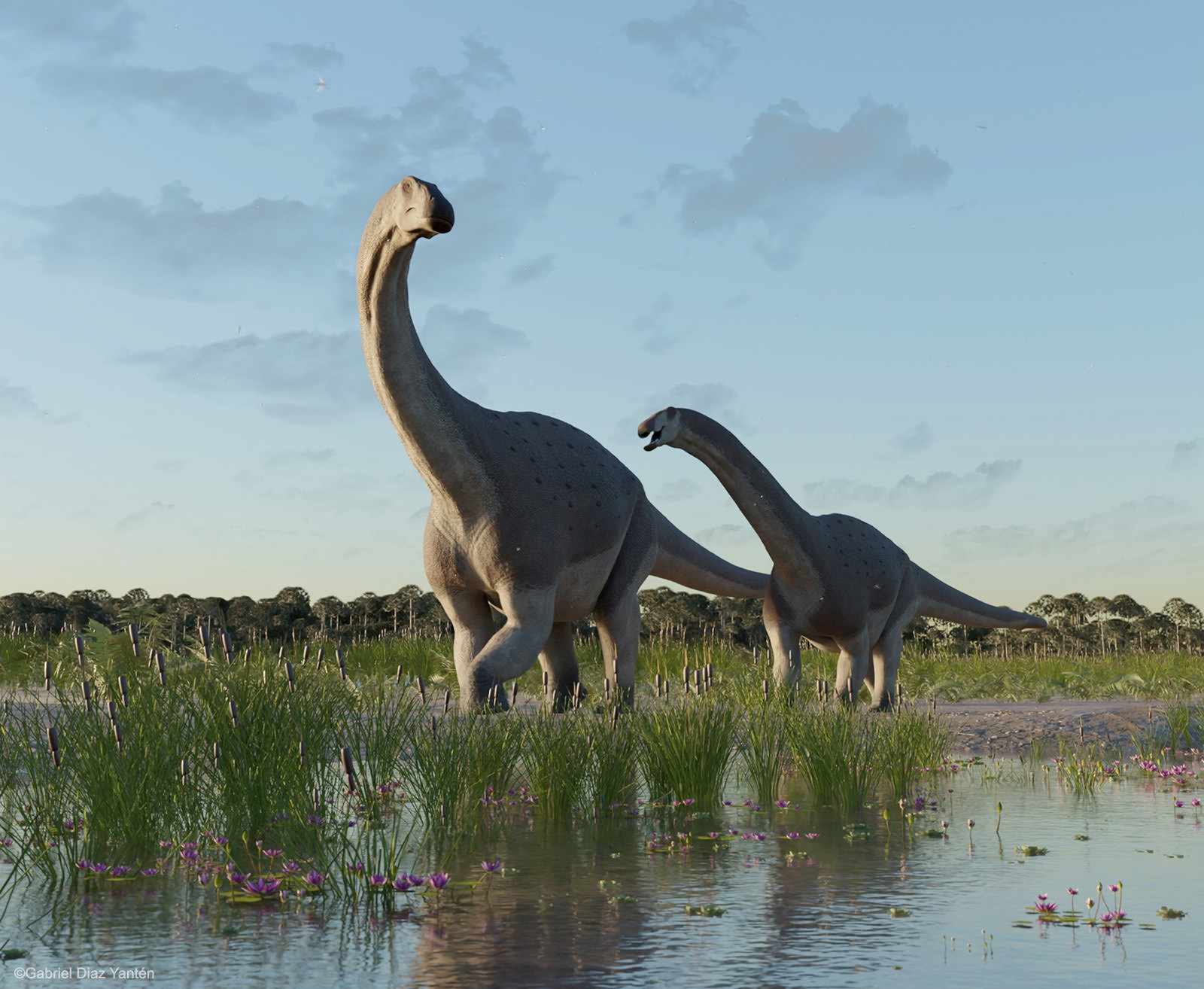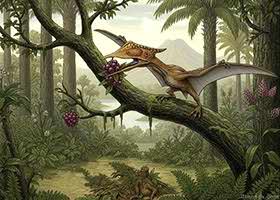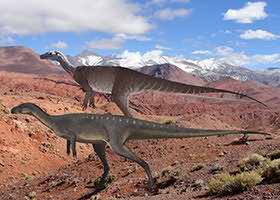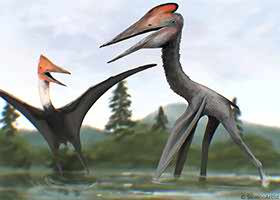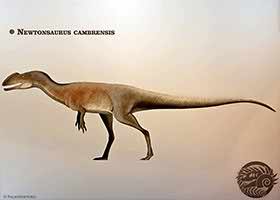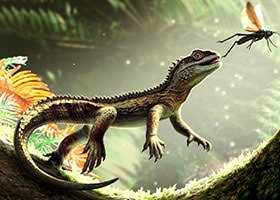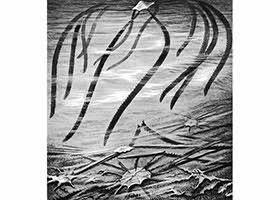
Researchers have discovered eagles and vultures, large extinct birds of prey that inhabited the landscapes of the Limestone Coast of South Australia, where they competed for food. They lived over 100,000 years ago during the Pleistocene, in the times of the famous megafauna. This is an amazing find, as eagle remains are very rare.
These are the only vultures known to have lived in Australia, and the formidable eagles, are among the earliest known extinct birds of prey.
A group of researchers from the paleontological laboratory of Flinders University has been conducting research on the extinct Australian megafauna for a long time. This fauna includes representatives such as the giant short-faced kangaroo Procoptodon, the giant wombat Diprotodon optatum, the “marsupial lion” Thylacoleo carnifex, and the largest eagle ever to fly in Australia, Dynatoaetus gaffae.

A flock of Cryptogyps lacertosus (left) watch on and wait their turn as several individuals of Dynatoaetus pachyosteus (center, right) feed from the carcass of a dead Diprotodon optatum. The Late Pleistocene Naracoorte landscape in southern Australia. © John Barrie.
Artist John Barry has recreated a scene that took place in ancient Naracoorte.
Other animals in the painting include crows, a Tasmanian devil, and a lizard. Other landscape features suggest that the climate would have been drier.
“There’s a Diprotodon in the center, being worked at by rip-tearing birds of prey,” said Barrie. “So you’ve got the ribs exposed, the guts everywhere; it’s a bit gory”.
“There’s a waterhole, a dried-up lagoon with a bird running along it, leaving tracks; here’s a king fern under a dying tree”, he says. “I could probably name 50 different plant species that I used”.
The largest extinct bird of prey was Dynatoaetus gaffae, which had a wingspan of up to 3 meters. Scientists discovered this eagle in Mairs Cave in the Flinders Ranges, South Australia. Now they have discovered a second species of this genus.

The large extinct eagle Dynatoaetus pachyosteus. Its humerus or upper arm/wing bone. Scale bar = 10mm. Ellen Mather (photos)
Researchers found the fossil bones of the second-largest eagle in Australia, Dynatoaetus pachyosteus, in Victoria Cave in Naracoorte Caves. It weighed up to 12 kilograms and lived between 500,000 and 200,000 years ago.
The name Dynatoaetus comes from the Greek words “dynatós”, meaning “mighty”, and “aetós”, meaning “eagle”.
This species from the Accipitridae family had a wingspan similar to that of the largest living raptor in Australia. However, it was more powerful and heavier built, as evidenced by its much stronger bones, especially its leg bones.

Fossils of the extinct eagle appear only at Naracoorte, based on current discoveries. © John Barrie.
The eagles of the genus Dynatoaetus lived solely in Australia and occur nowhere else in the world. It is one of the largest known predators in the region, second only to the Haast’s eagle of New Zealand.
These extinct birds of prey have long inhabited Australia. They have a distant relationship to eagles outside of Australia. The Crested Serpent Eagle and the Philippine Eagle are exceptions. They are the primary predatory birds in the tropical rainforests of Southeast Asia and New Guinea.
Another bird of prey: the vulture Cryptogyps
The same group of scientists also discovered the Australian vulture Cryptogyps lacertosus in an underwater cave known as Green Waterhole (formerly known as the Fossil Cave) in the Tantanoola district, near Mount Gambier. The vulture is comparable in size to the modern wedge-tailed eagle. Scientists described the creature based on bones, including an almost complete pair of wings and shoulder and spinal bones from one individual.

What the extinct vulture Cryptogyps lacertosus would have looked like. © John Barrie.
The vulture Cryptogyps lived in Australia between 500 and 50 thousand years ago, up to the mass extinction of megafauna. Previously, researchers mistakenly thought that its fossils belonged to the powerful grave eagle (Taphaetus lacertosus).
These remains from South Australia, together with findings from the Nullarbor Cave in Western Australia, indicate that Cryptogyps was a rather primitive vulture.
“Most vultures in the Aegypiinae (Old World vultures related to the Griffon Vulture) subfamily have extremely light wing bones filled with air cavities, thought to help with long periods of soaring flight,” says Dr. Mather. “But Cryptogyps seems to have lacked this adaptation”.

Fossil bones from the wing and shoulder of the extinct vulture Cryptogyps lacertosus, recovered from a cave Green Waterhole, South Australia. Scale bar = 50mm. Photograph: Ellen Mather
This made it not as efficient a soaring bird as its living relatives. This bird isn’t built for active hunting and, therefore, is not a hawk or eagle. Its leg bones lack development to support the muscles needed to kill prey. Its weight reached 6 kg.
Researchers discovered the extinct birds of prey Cryptogyps lacertosus and Dynatoaetus pachyosteus in the fossil deposits of Victoria Fossil Cave. The cave ranks among the most well-preserved and rich deposits in the world.
The extinction of large marsupials became the direct cause of the extinction of the vulture Cryptogyps and the giant eagle Dynatoaetus, which thus lost their main food sources. Today, there is only one large predatory bird in Australia, which is quite unusual for the world, as most ecosystems have at least a few large predators.
Research Article: Pleistocene raptors from cave deposits of South Australia, with a description of a new species of Dynatoaetus (Accipitridae: Aves): morphology, systematics and palaeoecological implications. © Ellen K. Mather et al.




